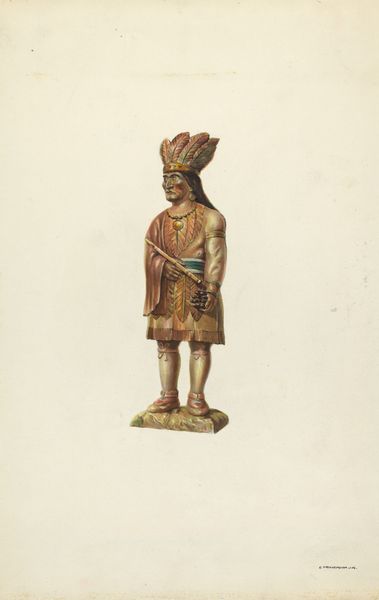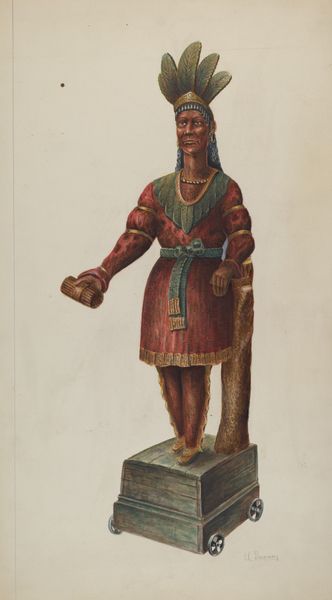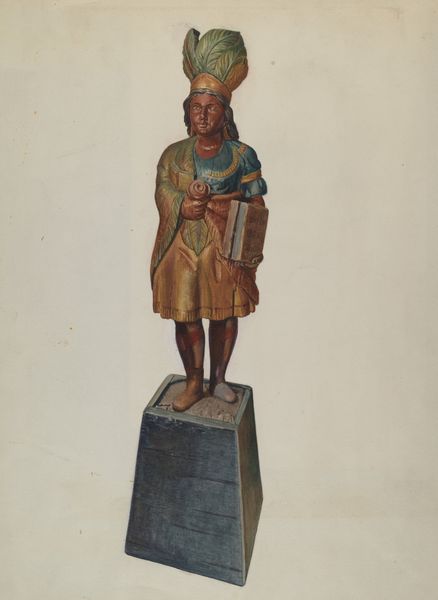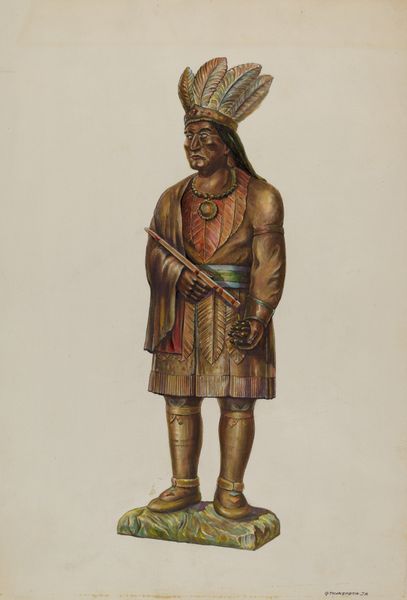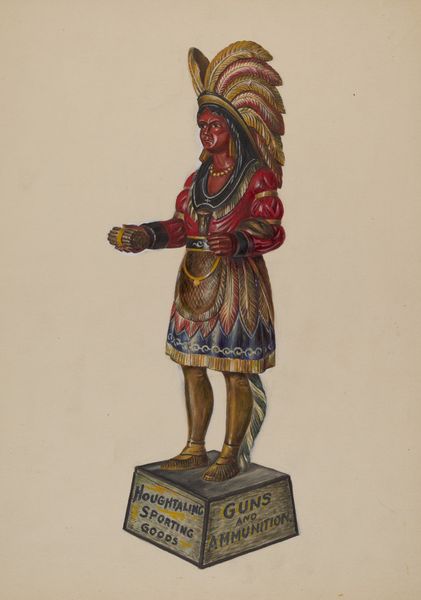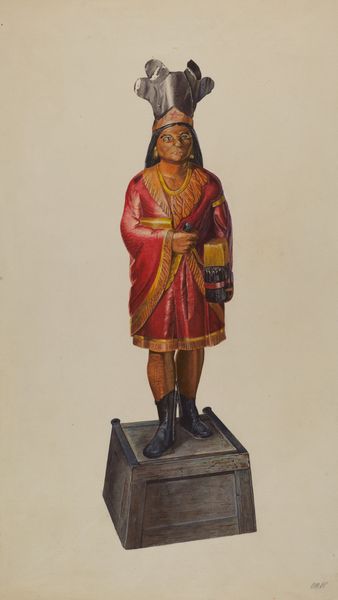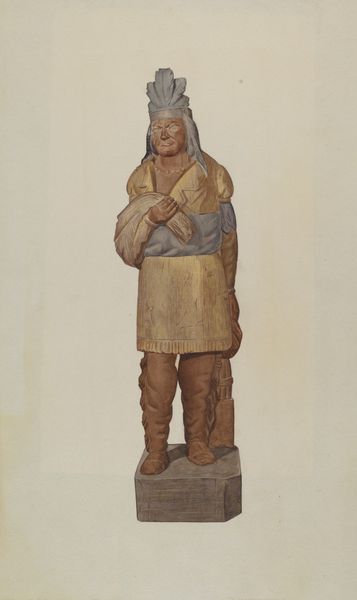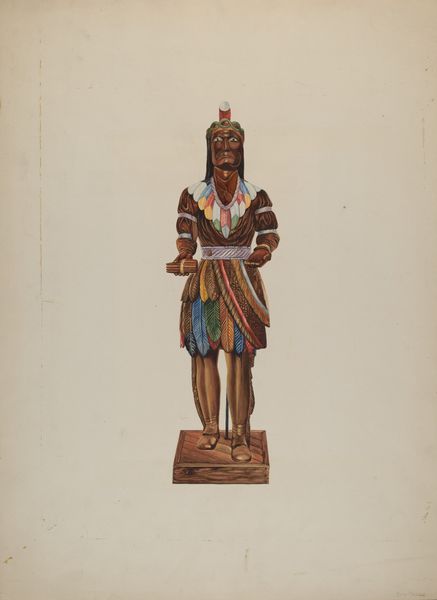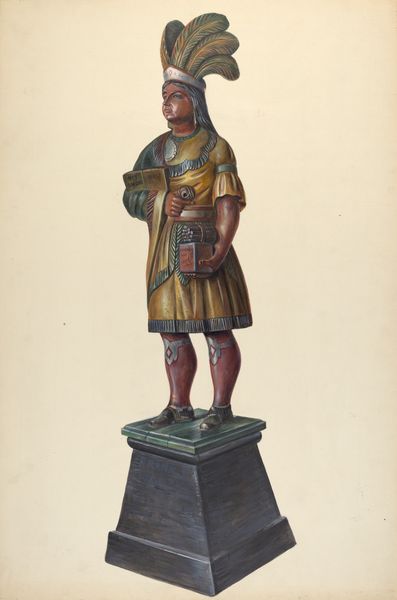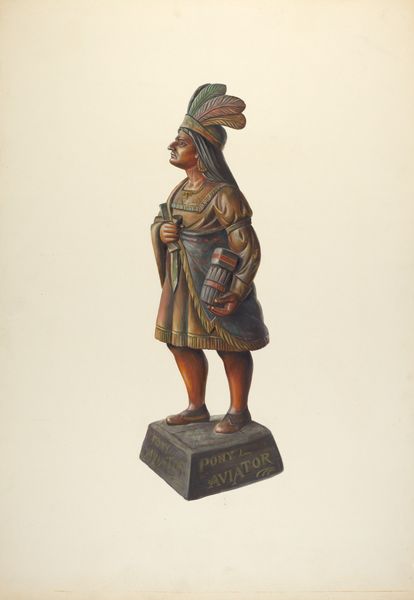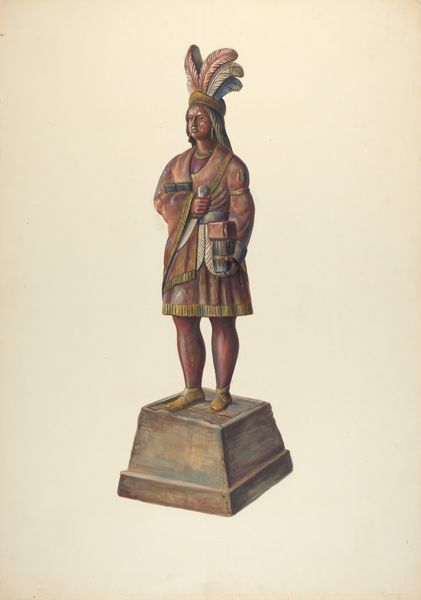
#
portrait
#
figuration
#
watercolour illustration
Dimensions: overall: 61 x 46 cm (24 x 18 1/8 in.)
Copyright: National Gallery of Art: CC0 1.0
Curator: I find this watercolor rendering quite fascinating. This is Einar Heiberg’s "Cigar Store Indian," created around 1937. What are your initial thoughts? Editor: Immediately, I'm drawn to the rendering of the figure’s clothes. It almost looks like they're made of tanned leather rather than woven cloth – you can almost feel their materiality, rough and substantial. Curator: And, of course, that materiality speaks directly to the artwork's namesake: the Cigar Store Indian. These weren't exactly fine art objects but rather, examples of vernacular commercial art, meant to signal trade, advertise availability. So it begs the question of Heiberg's intent in creating this image. Editor: It is striking, to see this object removed from its place as kitsch signage. Cigar store figures were effectively mass-produced – carving was frequently farmed out to teams to churn out as many pieces as quickly as possible. I wonder, what was it like making a rendering of such an artifact in watercolor? How would that affect the consumption and appreciation of the final work? Curator: Absolutely. The painting isolates the figure and elevates it, placing it in a fine art context—altering our perception of the sculpture and also touching upon a complicated social and historical subject, a common stereotypical figure rooted in harmful appropriation. Editor: Precisely, this work offers insight into cultural representations, its relationship to colonialism and commerce. It acknowledges the difficult dialogues that occur when indigenous cultures intersect with consumerism and widespread historical beliefs. Curator: Agreed. The transformation through Heiberg’s brush raises many essential questions around appropriation, exploitation, and how art plays into that. Editor: Yes. The painting really makes you consider what these objects *mean*, how deeply rooted they are within our cultural context, and how those values influence consumption, then and now. Curator: Thank you for adding to my understanding of that. The commercial value and implications had been on my mind, and the history lesson made for a rich addition to what our visitors will get out of this experience. Editor: It was a pleasure; these conversations bring added dimensions to otherwise overlooked histories.
Comments
No comments
Be the first to comment and join the conversation on the ultimate creative platform.
